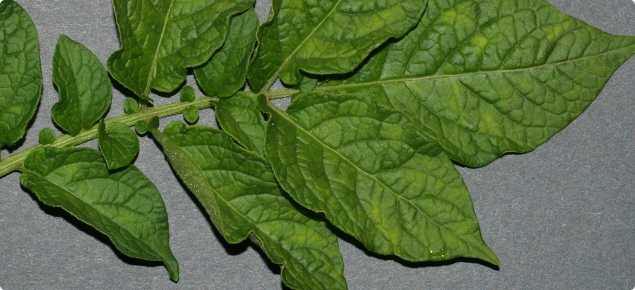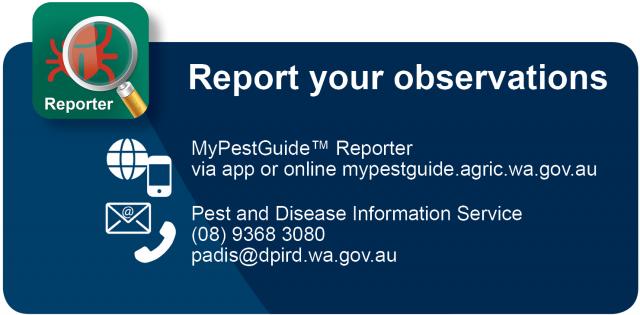What plants are affected?
The main host of PVYNTN is potato. The virus also infects tomato, garden petunia and tobacco, as well as some weeds like blackberry nightshade.
What to look for
- Infected potato leaves normally have only mild symptoms. There may be mild yellow mottling (mosaic), but leaf symptoms are subtle or absent in most potato varieties.
- Irregular rings appear on the surface of tubers close to harvest. The rings are pinkish-coloured at first then extend into the flesh, becoming dark, necrotic and sunken.
- Above-ground symptoms caused by PVYNTN on tomato are similar to potato. Plants may be stunted with leaf mosaic symptoms.
- Symptoms on petunias include leaf mosaic, yellow mottling, vein clearing and distortion of leaves and stems. Flowers may be affected by colour breaking (irregular patches of lighter colour) and plants are stunted.
Survival and spread
- PVYNTN spreads over long distances when infected potato tubers are used as seed. If the virus is present in the tuber, all plants that grow from it are infected.
- The most important management practice is to use certified seed tubers from virus-tested seed stock.
- Infected old crop plants, self-sown potato plants and weeds like blackberry nightshade allow the virus to survive between growing seasons.
- The virus is spread from these infected plants to new potato crops by aphids.
- PVYNTN can also be spread when infected sap is transferred to healthy plants on tools or when tubers are handled or cut.
- Petunias which are propagated by cuttings are more likely to be affected by the virus than those grown from seed.
What damage can this pest cause?
Potato tuber necrotic ringspot disease, caused by PVYNTN is a serious disease of potatoes. It was first found in Europe in the 1980s, and has since spread to many other parts of the world, including eastern Australia.
Status in Western Australia
Potyvirus potato virus Y necrotic tuber ringspot (PVYNTN) is considered absent from Western Australia and is a quarantine pest.
It is a prohibited organism under section 12 of the Biosecurity and Agriculture Management Act 2007. Western Australia's Pest Freedom for PVYNTN is supported by general and specific surveillance (including potato seed certification), specific import requirements to prevent its entry, and legal requirements to report any occurrences of the pest.
Report suspect disease
It is important that any suspect disease occurrence is reported. Early detection and eradication will help protect Western Australian potato growers. Please make a report using MyPestGuide or contact the Pest and Disease Information Service (PaDIS) to report this pest.


